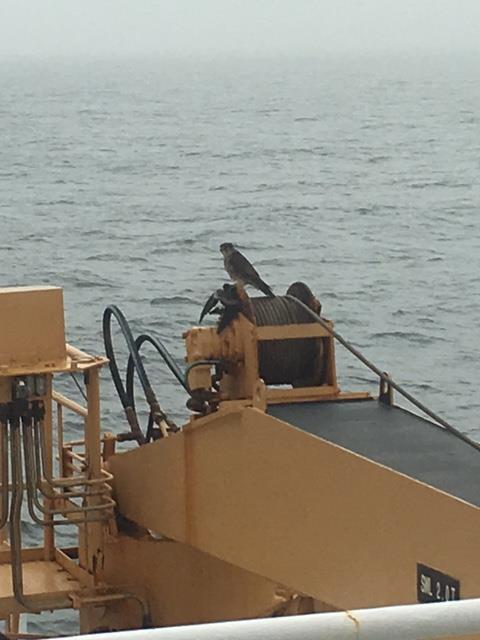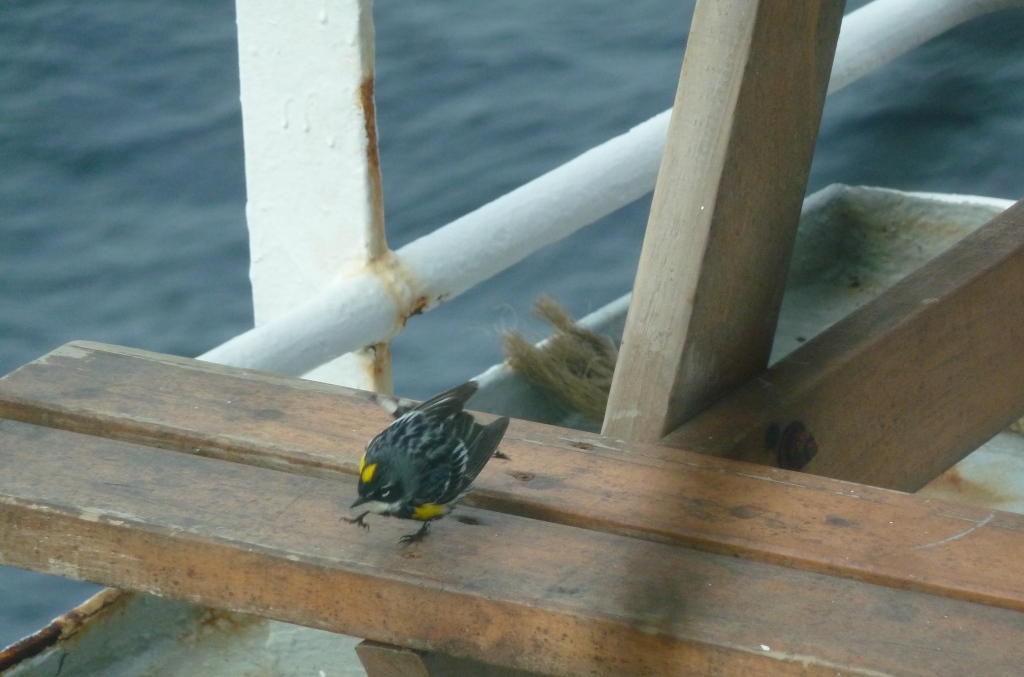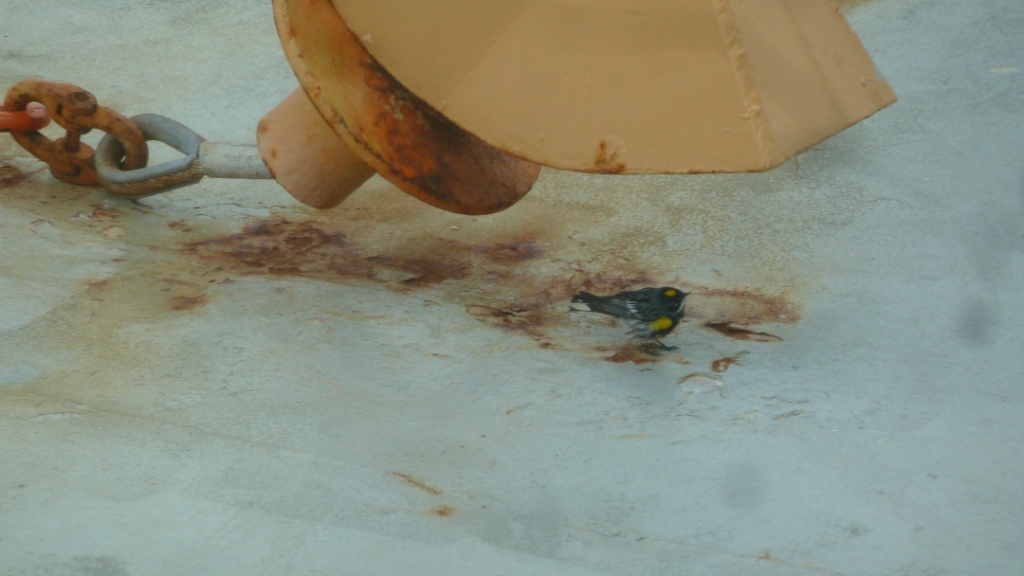Doing pelagic seabird counts can be extremely interesting…..or, at times, extremely tedious. One thing is a constant: you never know what you might see and where you might see it. Like the other day. Normally one would start looking for Sperm Whales in deep water, where the shelf drops off from a couple of hundred meters to thousands. They dive deep to find their favoured food – giant squid – which hang out in the extreme depths. But this big old bull was nonchalantly sleeping on the surface within 50 meters of the ship – and in only 200 meters of water. As we slipped by it at 10 knots its only reaction was to continue sleeping with occasional blows to mark its location.
Last Summer, off the coast of Nova Scotia swordfish began to jump, right in front of the vessel, clearing the water by as much as 3 meters. Fantastic! Or what about the 6 Leatherback Turtles off the north coast of Cape Breton!?
And this is especially true of birds. There are certain pelagic species you expect to see at any particular time but then there are the others: Great Skuas or South Polar Skuas, or adult Pomarine Jaegers with their unique tail streamers, Cory’s Shearwaters or Manx Shearwaters. You don’t see a lot of these but when you do it’s pretty special.
But then there’s the ones you definitely do not expect to see well out at sea – birds you associate with hard land. So when you see them, especially when you’re well offshore, you’re really surprised. For the most part these birds don’t want to be out where the ship is and they are probably in trouble. Maybe they have a faulty navigational system; maybe they ran into a storm with strong offshore winds. Whatever the reason they’re usually under duress and the ship is a welcome respite giving them a chance to regroup, rest, maybe even feed a little if there’s some insects around in the ship’s nooks and crannies. Some birds though simply come across the ship in the course of their migration – for example, birds travelling from Greenland to Baffin Island (Snow Buntings and Pipits) may stop to inspect the ship although most just keep on moving, hunkered down in a trough out of the wind.
Here’s a list of land species that I’ve seen on the ship over the course of the past few years:
– the most recent was a Common Snipe flying around the vessel for at least half an hour just 10 days ago and about 120 miles offshore. Occasionally it would land and rest up before taking off again.

– Peregrine Falcon: I’ve seen two, both about 90 miles offshore; these birds will often make open water crossings. The ship acts as a feeding platform for the one pictured – with a storm-petrel. Another one used it as a hunting perch. The last time I saw it was when it had flown off in pursuit of a Red Phalarope and then itself was pursued by a Pomarine Jaeger.
–Yellow Warbler: I saw a pair about 35 miles offshore from Nova Scotia and a single bird that we caught and tried to save; it was 110 miles out from Cape Chidley at the north end of Labrador! [We were unsuccessful in out attempts to preserve it – we simply ran out of insects.]
– Cliff Swallow: two – both seen on separate days in mid-August; one 10 miles off the coast of Nova Scota, the other 20 miles off the SE coast of Labrador.
– Myrtle Warbler: we had a lovely male on the ship 120 miles out from St. John’s.
– American Pipits and Snow Buntings: We ran into flocks of these birds (some mixed flocks, some monospecies) as we steamed south out of Baffin Bay through the Davis Strait. Small, continuous flights of these birds were seen on September 8th and 9th; they were heading due west – from their breeding grounds in Greenland to Baffin Island and thence down into southern Canada/northern U.S. for the Winter. Several groups checked out the ship and a few even landed for brief periods. [The crossing distance where I saw them was about 500 miles.]
– Lapland Longspur: probably mixed in with the pipits and Snow Buntings, this bird was seen on Sept. 8th on the western side (but still well offshore) of Baffin Bay.
– Yellow-bellied Flycatcher: one was on the ship about 5 miles out from St. John’s.
– Red-breasted Nuthatch: several miles off the coast of Sable Island.
– Bank Swallow: one seen on August 13th about 130 miles off the SE coast of Labrador.
– Northern Rough-winged Swallow: 4 were seen on August 19th about 100 miles off the coast Labrador.
– Dark-eyed Junco: one seen about 40 miles off the east coast of southern Baffin Island.
The sight of these slight landbirds far out at sea always amazes me and then gets me wondering: what happened that they’re here now and….will they/did they make it?
Rick


